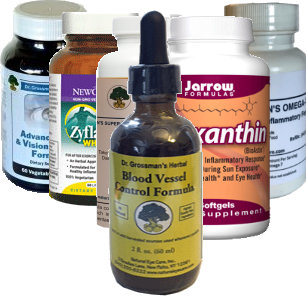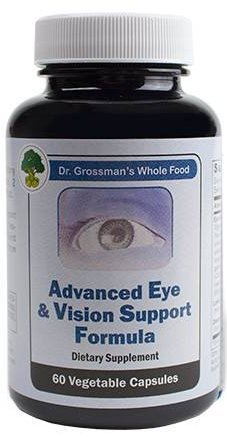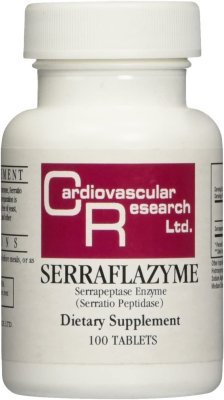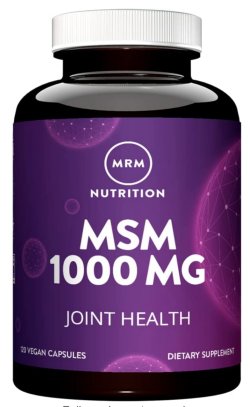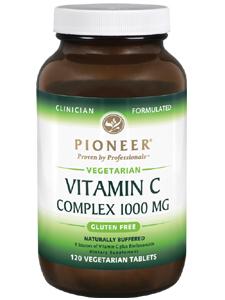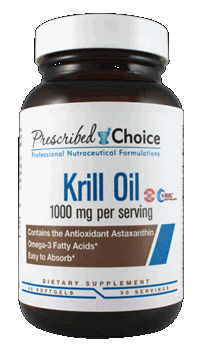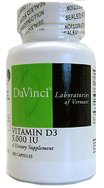Uveitis
About the uvea Symptoms Causes Treatment
Uveitis is inflammation in the uvea, which includes the iris, the ciliary body, and the choroid in the eye. It can also affect nearby parts of the eye, like the retina, vitreous, and optic nerve. Over time, chronic inflammation due to uveitis can cause permanent vision loss, if not controlled. Chronic uveitis is often associated with other ongoing systemic inflammatory conditions.
Vitamins & Supplements
On a tight budget?
We recommend
Advanced Eye & Vision Support Formula (whole food) 60 vcaps
Discount Packages |
Essential |
Essential |
Essential |
Essential |
Essential |
Essential |
Very Important |
A Leading Cause of Blindness
It is a contributing factor to a number of serious eye conditions, including cataracts, macular degeneration, and glaucoma. Uveitis is the third leading cause of blindness in developed nations, and the fifth leading cause of blindness in America. Without treatment, it frequently leads to vision loss.

The Uvea
The uvea consists of three structures
The iris, the colored tissue surrounding the pupil.
The ciliary body, the muscle located behind the iris which focuses the lens.
The choroid, containing blood vessels that line the back of the eye.
Inflammation occurring in any of these three structures is termed "uveitis". Inflammation in uveitis may involve any but not necessarily all of these three structures. Depending upon which structures are inflamed, uveitis may be further subcategorized into one of three main diagnoses.
- Iritis or anterior (front) uveitis Anterior uveitis can involve the iris, ciliary body, cornea, and sclera. It is the most common type of uveitis and accounts for approximately 50–60% of all uveitis cases in special care clinics. Sixty-five percent of cases are related to another health condition. The remaining 35% are idiopathic (no discernible relationship to another health problem).
- Cyclitis or intermediate uveitis. Intermediate uveitis is the least common type of uveitis and has been found to account for 3–17% of uveitis around the world.
- Coroiditis or posterior uveitis. This category accounts for only 10–40% of uveitis cases. However, more visual loss results in these cases than from other uveitis forms. Such vision loss may be due to cystoid macular edema, retinal detachment, subretinal fibrosis, or optic nerve damage. Up to 50% of patients with posterior uveitis have an associated systemic disease.
Severe and permanent visual loss can result from uveitis. In addition, uveitis can lead to other ocular complications which may produce vision loss, including glaucoma, cataracts or retinal damage. Early detection and treatment is necessary to reduce the risk of permanent vision loss.
Symptoms
Depending on which part of the eye is inflamed in uveitis, a combination of the following symptoms may be present:
Redness, light sensitivity, floaters, blurry vision and/or pain.
These symptoms may come on suddenly, and you may not experience any pain. The symptoms described above may not necessarily mean that you have uveitis. However, if you experience one or more of these symptoms, contact your eye doctor for a complete exam.
Causes
Uveitis may arise from either infectious or non-infectious sources.
Non-infectious
Uveitis may develop following eye trauma or surgery. It is often associated with other conditions that are autoimmune or inflammatory in nature. Fifty percent of cases are idiopathic (no underlying cause identified), 20% are due to trauma, and 30% are due to a systemic underlying cause.
- Digestive system conditions such as Crohn’s or colitis.
- Arthritic conditions such as ankylosing spondylitis (lower back), It may be linked to rheumatoid arthritis. Chronic inflammation of the joints may cause anterior uveitis (iritis) but more often can cause dry eye, keratitis, and scleritis. Psoriatic arthritis is a kind of arthritis which includes scaled skin tissue - it can be the contributing cause of anterior uveitis.2
- Respiratory/circulation system conditions such as sarcoidosis (an inflammatory disease involving mostly the lungs and lymph glands).
- Eye conditions. A cancer in the eye, such as a lymphoma, can cause uveitis.
- Certain drugs can cause orbital inflammation, uveitis, and scleritis, such as bisphosphonates (including Fosamax) that for example, are prescribed to post-menopausal women to prevent calcium bone loss.
- Smokers are almost twice as likely to develop uveitis as non-smokers.
- Allergies. Chronic allergies can cause general inflammation in the body.
Infectious.
Viruses like Lyme disease, West Nile virus, herpes zoster, syphilis, tuberculosis, or toxoplasmosis may cause uveitis. Helicobacter pylori infection has also been implicated with the onset of uveitis.
Conventional Treatment
Aggressive medical treatment of uveitis is needed to prevent glaucoma, scarring of the structures inside the eye, and possible blindness. If the cause is known, prescription drugs are used to control that cause and reduce inflammation.
- Eye drops are most often used for anterior uveitis, sometimes in conjunction with corticosteroid injections. But they must be postponed if the corneal surface is damaged by an ulcer, because the corticosteroids prevent healing of the ulcer or lead to a worsening of it.
- Injections and oral medication (corticosteroids) are used for posterior uveitis or panuveitis.
- Aspirin (not aspirin substitutes), Rimadyl, indomethacin, Profinal, Ocufen, Voltaren, and corticosteroids (cortisone drugs) are used to minimize inflammation.
- Certain nutrients such as Serrapeptase, fish oil, vitamin C and MSM may help reduce inflammation naturally due to uveitis, and offers an excellent complement to the recommendations of your eye doctor.
- Supplementation with research-proven nutrients and eyedrops that contain targeted nutrients and herbs that support healthy vision and overall eye health. Antioxidants and anti-inflammatories such as astaxanthin,8 bilberry, lutein,9, 10 omega-3s,11 zeaxanthin, curcumin,12, 13 resveratrol, 14, 15 and MSM16may be helpful.
- Lifestyle and diet suggestions - see our suggestions to support healthy vision.
- Reduce sugar in your diet. Research indicates that diets that are high in refined sugars increase inflammation.1
- Reduce refined starches such as white flour and white rice in your diet. Research connects these highly processed foods with increased inflammation.1
- Iritis
- Immune disorders such as rheumatoid arthritis
- Some conditions that may have similar symptoms such as retinal detachment, retinitis pigmentosa, and some forms of cancer
Another possibility is the use of a capsule implanted in the eye that slowly releases corticosteroids. In 2005, the drug Retisert was approved by the FDA for this use, for severe cases of uveitis.
Complementary Approach
Taking targeted supplements and establishing healthy lifestyle habits are important over the long term to reduce inflammation and neutralize free radicals produced by ongoing inflammation. During the metabolism of cell mitochondria (the energy sources in the cell) reactive oxygen species (ROS) are generated. ROS refer to reactive molecules and free radicals that damage healthy cells. ROS play an important role in influencing inflammatory signals induced by large molecules called endotoxins that hold toxins within their cell walls (lipopolysaccharides or LPS).
A number of different antioxidants have been shown to neutralize ROS, including glutathione (best taken sublingually or intraorally).3 Oxidative stress and inflammation associated with uveitis play critical roles in the initiation and progression of a wide range of eye diseases, including age-related macular degeneration, glaucoma, cataract, cystoid macular edema, and diabetic retinopathy that lead to progressive loss of vision and blindness if untreated.4, 5, 6 There is growing evidence that supplementing with targeted nutrients that have antioxidant and anti-inflammatory properties may have a role in the prevention and treatment of these age-related eye diseases and disorders.7
Uveitis News
Want to learn more? See our blog for news on uveitis.
Studies
Although the underlying physiological cause of uveitis might be unique, research shows that chronic eye inflammatory conditions are often related to underlying autoimmune disorders such as rheumatoid arthritis, ankylosing spondylitis, infection, exposure to toxins, or even a compromised digestive system.
Also see research on alternative treatment for uveitis.
Related Conditions
Footnotes
1. Janice K. Kiecolt-Glaser, PhD, Stress, Food and Inflammation: Psychoneuroimmunology and Nutrition at the Cutting Edge, Psychosom Medicine, May, 2010.
2. Pi Murray, S. Rauz, The eye and inflammatory rheumatic diseases: The eye and rheumatoid arthritis, ankylosing spondylitis, psoriatic arthritis, Best Practice & Research. Clinical Rheumatology, October, 2016.
3. Ray, P.D., Huang, B.W., Tsuji, Y. (2012). Reactive oxygen species (ROS) homeostasis and redox regulation in cellular signaling. Cell Signal, May;24(5):981-990.
4. Levkovitch-Verbin, H. (2015). Retinal ganglion cell apoptotic pathway in glaucoma: Initiating and downstream mechanisms. Prog. Brain Res, 220:37–57.
5. Kowluru, R.A., Mishra, M. (2015). Oxidative stress, mitochondrial damage and diabetic retinopathy. Biochem. Biophys. Acta. 1852:2474–2483.
6. Dib, B., Lin, H., Maidana, D.E., Tian, B., Miller, J.B., et al. (2015). Mitochondrial DNA has a pro-inflammatory role in AMD. Biochem. Biophys. Acta, 1853:2897–2906.
7. Rhone, M., Basu, A. (2008). Phytochemicals and age-related eye diseases. Nutr. Rev, 66:465–472.
8. Sportsnutritionist. Maher, T.J. (2000). Astaxanthin. Retrieved Dec 04 2017 from http://sportsnutritionist.info/course/wp-content/uploads/2013/04/Astaxanthin.pdf
9. Sasaki, M., Ozawa, Y., Kurihara, T., Noda, K., Imamura, Y. (2009). Neuroprotective effect of an antioxidant, lutein, during retinal inflammation. Invest Ophthalmol Vis Sci, Mar; 50(3):1433-9.
10. Jin, X.H., Ohgami, K., Shiratori, K., Suzuki, Y., Hirano, T., et al. (2006). Inhibitory effects of lutein on endotoxin-induced uveitis in Lewis rats. Invest Ophthalmol Vis Sci, Jun; 47(6):2562-8.
11. SanGiovanni, J.P., Chew, E.Y. (2005). The role of omega-3 long-chain polyunsaturated fatty acids in health and disease of the retina. Prog Retin Eye Res, 24(1): 87–138.
12. Kurup, V.P., Barrios, C.S. (2008). Immunomodulatory effects of curcumin in allergy. Mol Nutr Food Res, Sep;52(9):1031-9.
13. Karaman, M., Arikan, A.Z., Firinci, F., Kiray, M., Bagriyanik, A., et al. (2011). Effects of curcumin on lung histopathology and fungal burden in a mouse model of chronic asthma and oropharyngeal candidiasis. Arch Med Res, Feb;42(2):79-87.
14. Remsberg, C.M., Yáñez, J.A., Ohgami, Y., Vega-Villa, K.R., Rimando, A.M., et al. (2008). Pharmacometrics of pterostilbene: preclinical pharmacokinetics and metabolism, anticancer, anti-inflammatory, antioxidant and analgesic activity. Phytother Res, Feb;22(2):169-79.
15. Perecko, T., Jancinova, V., Drabikova, K., Nosal, R., Harmatha, J. (2008). Structure-efficiency relationship in derivatives of stilbene. Comparison of resveratrol, pinosylvin and pterostilbene. Neuro Endocrinol Lett, Oct;29(5):802-5.
16. Batawan, M., Benjamin, R.L., Bloomer, R.J. (2017). Methylsulfonylmethane: Applications and Safety of a Novel Dietary Supplement. Nutrients, Mar;9(3):290.
 info@naturaleyecare.com
info@naturaleyecare.com



 Home
Home



 Vision
Vision Vision
Vision



 Health
Health Health
Health Research/Services
Research/Services Pets
Pets About/Contact
About/Contact

